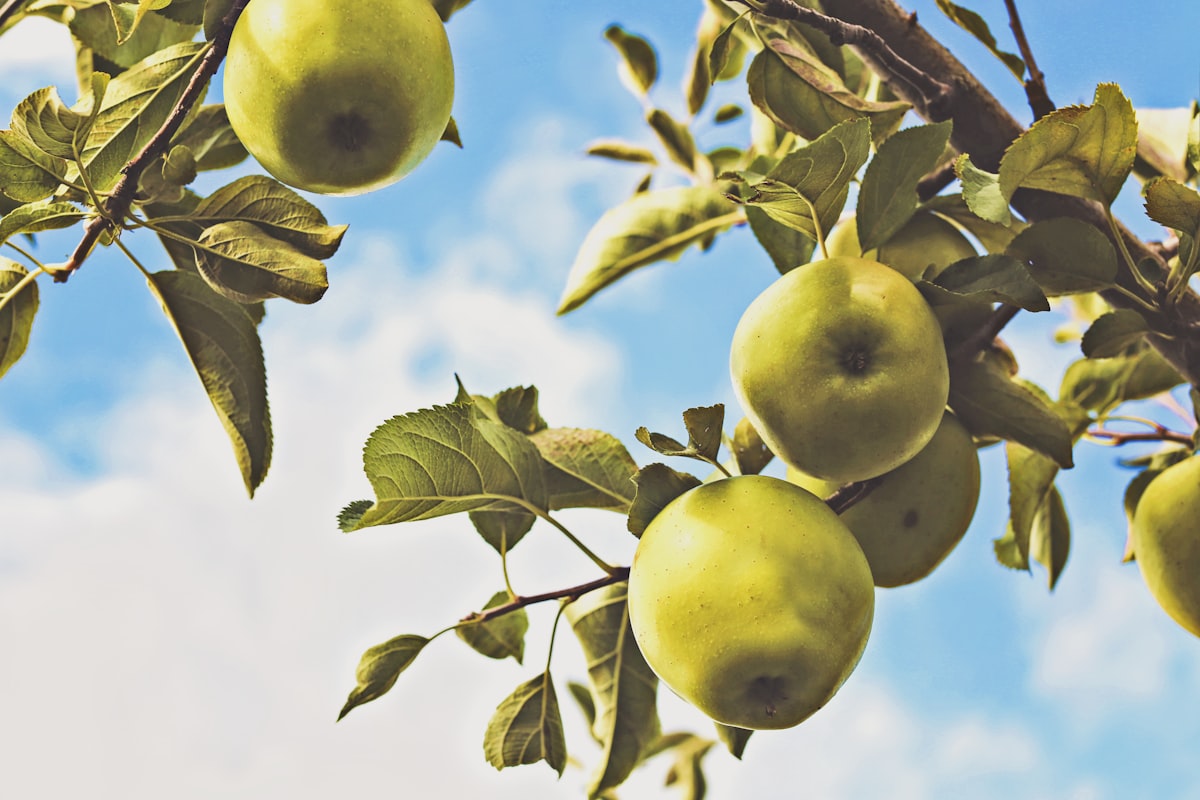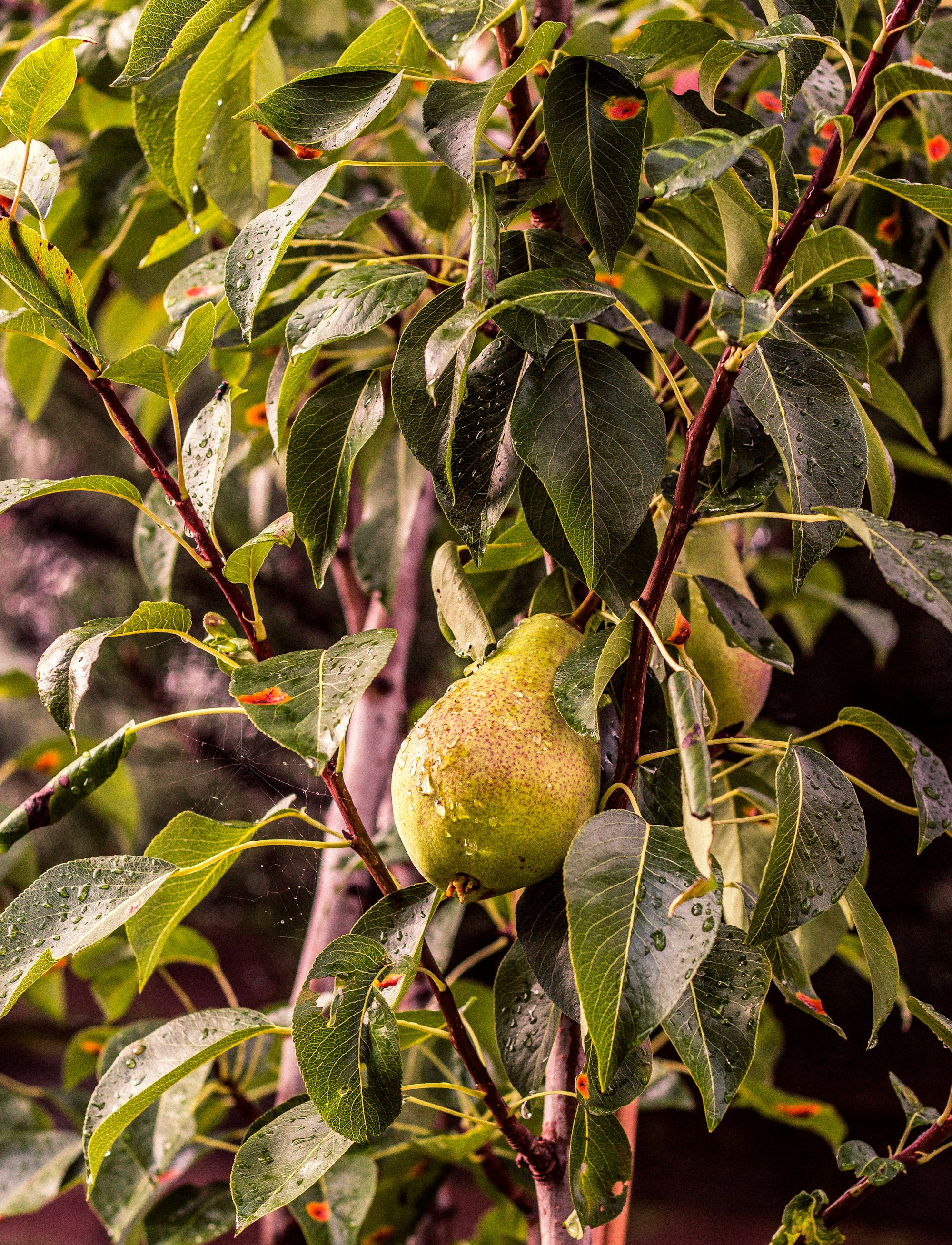How to Grow Pears
Growing pears in your garden can be a rewarding experience, as they are generally easier to cultivate than apples and can be a delicious addition to your fruit trees.

Table of Contents
With varieties such as Bartlett, Anjou, Bosc, and Asian pears, there's a pear tree suitable for every garden space.
To start, choose a sunny spot for your pear tree that receives at least six hours of sunlight daily and has well-draining, organically rich soil.
Remember that pear trees require proper care, including staking, pruning, and disease prevention, to ensure a bountiful harvest of sweet, juicy fruit.
About Pear Plant
Pear trees are a popular fruit tree choice for home gardeners due to their hardiness, adaptability to various climates, and ability to grow in tight spaces.
There are two main types of pears, European and Asian, which differ not only in taste and texture but also in tree characteristics and cultivation requirements.
European pear trees produce the classic pear shape, with juicy, sweet fruit and a buttery texture when ripe.
Asian pear trees, on the other hand, yield crisp and mildly sweet fruit, often round, reminiscent of an apple.
Both pear tree types can be found in various cultivars to suit different growing conditions, taste preferences, and desired tree sizes.
Pear trees generally blossom in spring, and the fruit matures during late summer or early fall, depending on the variety.
When selecting a pear tree, consider factors such as space, climate, desired fruit characteristics, and compatible cultivars for successful pollination.
With proper care, these fruit trees can reward you with an abundant and delicious harvest of pears for years.
Growing Pears
When planting a pear tree in your garden, choose a location with full sun exposure, as they need at least six hours of sunlight daily to produce sweet fruit.
Ensure the soil is well-draining and rich in organic matter, but avoid overusing nitrogen-rich fertilizers, as they can make the tree more susceptible to fire blight.
Before planting, acquire your pear tree from a reputable nursery, ensuring the graft union is visible and healthy.
To plant the pear tree, dig a hole twice as wide and slightly deeper than its root ball, position the tree carefully in the hole, and spread the roots out evenly.
Backfill the soil, tamp it down gently, and water thoroughly to settle the soil around the roots.
For small yard spaces or creating an espalier, consider planting semi-dwarf or dwarf varieties of pear trees.
Remember to plant two different varieties for successful pollination and fruit set.

Caring for Pear Plant
Sun and Temperature
Pear trees need full sun, so ensure they receive at least six hours of sunlight daily. They can tolerate various temperatures but are most hardy in zones 4 to 9.
Water and Humidity
Established pear trees require an inch of water per week, whether from rainfall or manual watering. Keep the soil moist, but avoid over-watering as it may cause root rot.
Soil
Select a well-drained soil rich in organic matter for your pear tree. A mixture of compost, manure, peat moss, and sand can create an ideal, fertile environment for growth.
Fertilizer
Fertilize your pear tree once a year, but avoid overuse, as it can lead to excessive foliage without fruit production.
Refrain from using nitrogen-rich fertilizers, as they can increase the tree's susceptibility to fire blight.
Repotting
If you're growing your pear tree in a container, ensure it has adequate room for root growth.
Choose a container with drainage holes and repot to accommodate the tree's increasing size.
Pruning and Propagation
Prune pear trees annually to remove dead or damaged branches and maintain their shape.
Focus on cutting back the main stem and lateral branches, promoting a balanced structure and healthy growth.
Troubleshooting Plant Problems
Growing Problems
Ensure your pear trees have enough space to grow; proper spacing allows for good air circulation, reducing disease risk.
Implement low-maintenance techniques like espalier or grafting to optimize your tree size.
It's essential to choose a disease-resistant cultivar for a healthy pear harvest.
Nitrogen-rich fertilizers can make pear trees susceptible to fire blight, so opt for well-draining soil with organic matter.
Pests and Diseases
Pear trees can be affected by pests such as aphids, pear psylla, codling moth, caterpillars, and diseases like fire blight, canker, brown rot, scab, and pear rust.
Regularly inspect your trees for signs of infestations or infections.
Applying dormant oil spray can help control some pests. Select cultivars resistant to common diseases, and prune back any wounded or cankered branches to prevent the spread of infections.
Companion Planting
When planning your pear tree garden, it is essential to consider companion planting.
This technique involves placing different plants near each other for mutual benefit.
Compatible companion plants for pear trees include sunflowers, comfrey, wildflowers, nasturtium, legumes, members of the allium family, lavender, dandelions, herbs like borage, clover, mustard, and Aster family flowers like African marigolds and chrysanthemums.
These companion plants support your pear trees by attracting pollinators, which is essential for successful fruit production, as pear trees are cross-pollinated.
Additionally, they can help to improve soil conditions, provide ground cover, and fix nitrogen levels in the soil for healthier tree growth.
While planting these companion plants, ensure they are placed within 50 feet of pear trees to optimize their benefits.
It is also worth noting that apple trees can serve as helpful companion plants, as they share similar requirements and can cross-pollinate with pear trees.
Always maintain a distance of at least 18 inches between your pear trees and the companion plants for proper growth and development.
By utilizing companion planting, you can create a thriving and diverse ecosystem that benefits your pear trees and their surroundings.
Conclusion
Growing pears can be a rewarding experience, and they are generally easier to cultivate than apples.
Plant your pear trees in a sunny, well-draining location and provide them with the necessary care throughout the year.
You can enjoy delicious harvests each year by selecting a suitable variety of pear trees and following the proper planting, pruning, and care techniques.
With some attention and patience, your pear trees will thrive and provide a delightful addition to your garden.
Frequently Asked Questions
How long until a pear tree bears fruit?
Pear trees usually start bearing fruit between 4 to 6 years after planting. The specific time frame depends on factors such as the tree's age when planted and the variety of pear chosen.
What is the ideal spacing for planting pear trees?
Plant pear trees about 15 to 20 feet apart if grown in a standard-sized variety. For dwarf varieties, 8 to 10 feet apart is sufficient. Proper spacing ensures adequate sunlight and airflow, contributing to healthy tree growth and fruit yield.
Do pear trees require a second tree for pollination?
Most pear tree varieties need cross-pollination from a different but compatible variety. Ensure the two chosen varieties bloom around the same time for successful pollination. Some pear trees, however, are self-pollinating and do not require a second tree to bear fruit.
Which pear tree varieties are self-pollinating?
Several pear tree varieties, including Bartlett, Moonglow, and Kieffer, are self-pollinating. These trees can produce fruit without a second tree, although cross-pollination may yield better. Researching your preferred variety's specific pollination requirements is crucial for the best results.
What conditions do pears grow best in?
Pears grow best in full sun, with at least six hours of sunlight daily. They prefer well-draining soil rich in organic matter. While they can tolerate various pH levels, a slightly acidic to neutral pH (6.0-7.0) is ideal. Avoid nitrogen-rich fertilizers, making the trees more vulnerable to fire blight disease.
How tall and wide do pear trees typically get?
Standard pear tree varieties can grow 18 to 20 feet tall and wide, while dwarf varieties generally reach 10 to 12 feet tall and wide. The tree's specific size depends on the rootstock, variety, and growing conditions. Consider available space and desired tree size when selecting a variety to plant.


